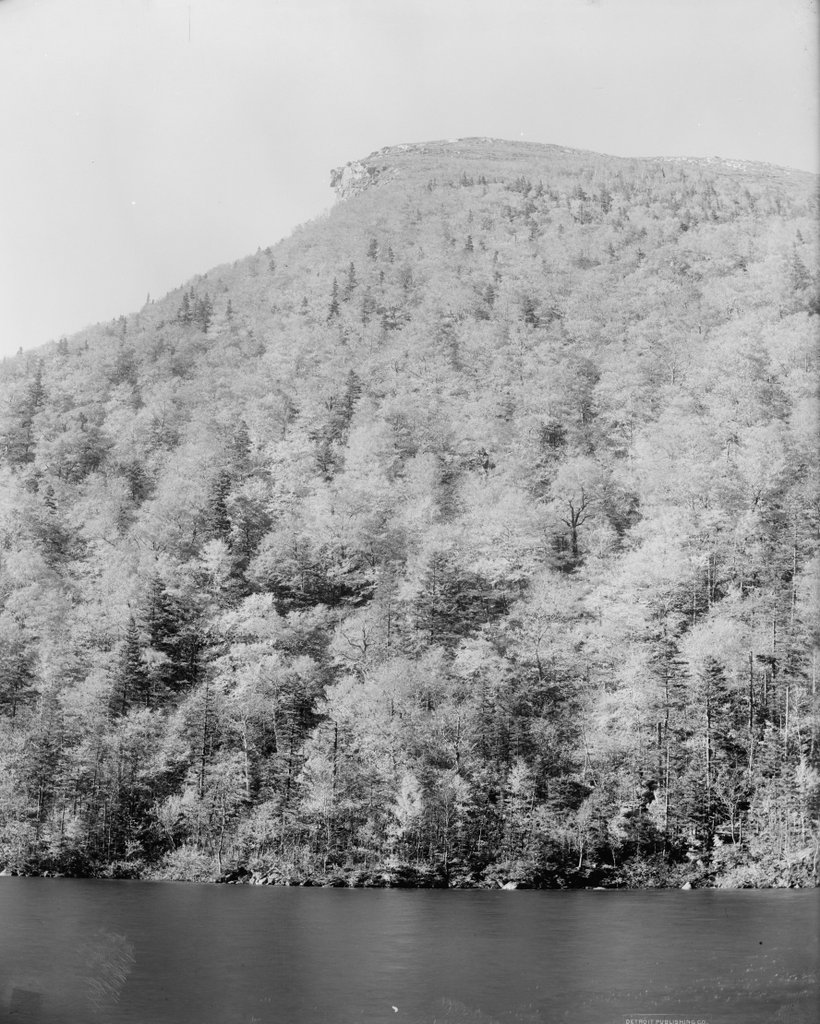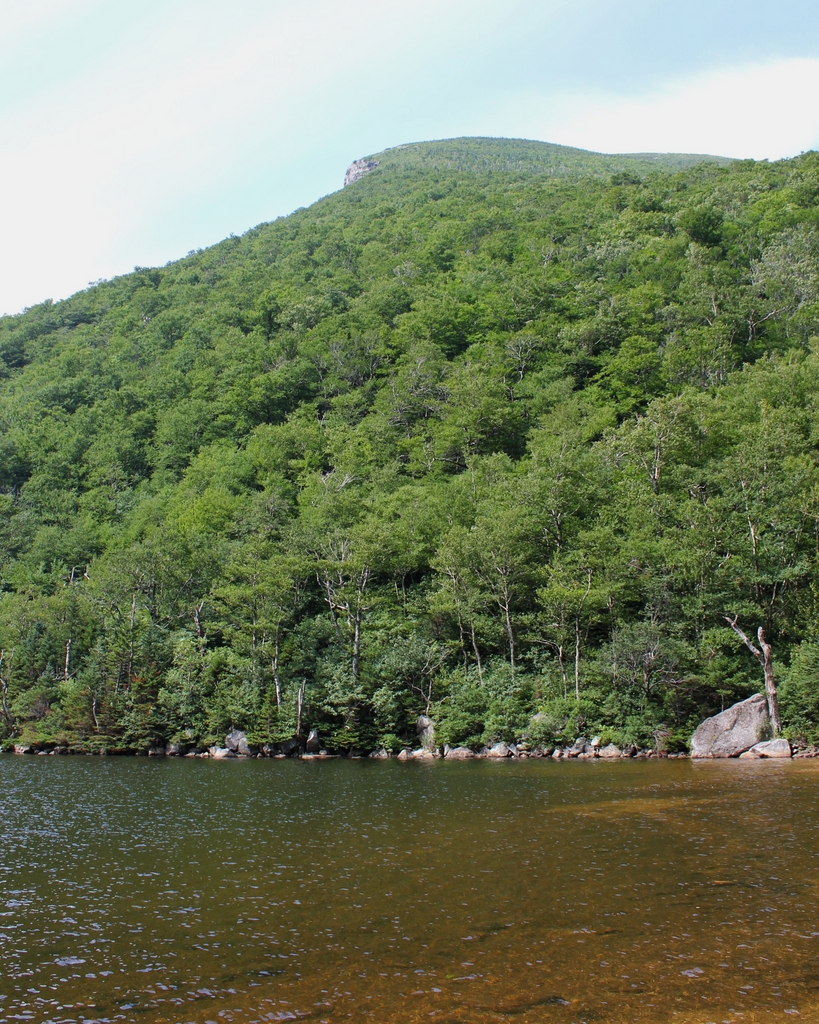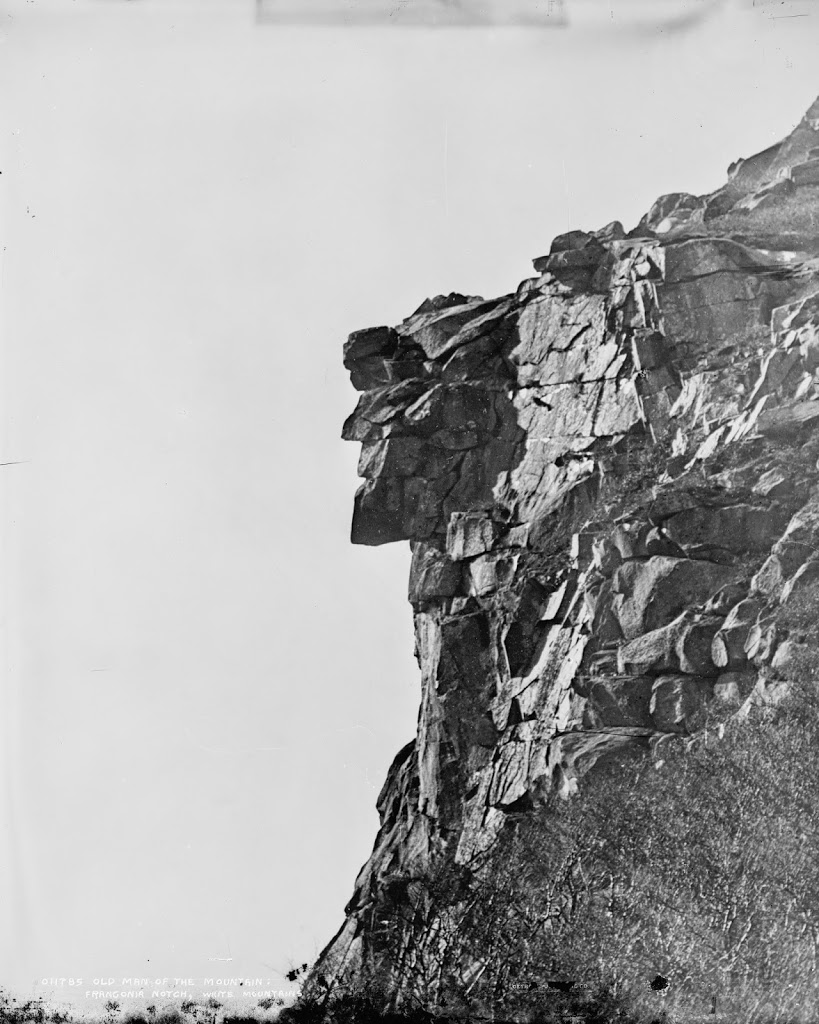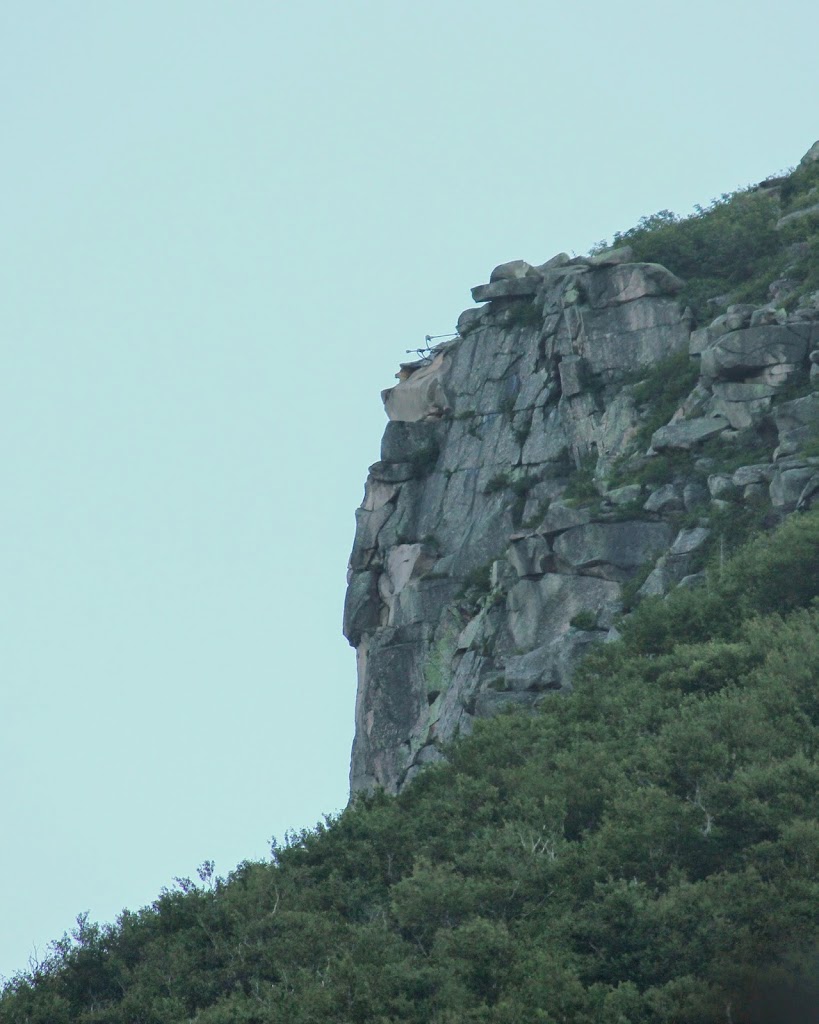The Old Man of the Mountain, seen from Profile Lake at the base of Cannon Mountain, around 1890-1901. Image courtesy of the Library of Congress, Detroit Publishing Company Collection.
The scene in 2018:
The Old Man of the Mountain was previously featured on this blog many years ago, in a post that showed a closeup of the rock formation, before and after its collapse. Unlike that view, however, this scene here shows not just the rock formation, but also its surroundings, including the east side of Cannon Mountain and Profile Lake at its base. This is, more or less, the view that most visitors would see of the Old Man from the ground, without the aid of binoculars or telephoto lenses.
The iconic granite profile was formed at some point after the last ice age, as a result of erosion at the top of the cliff. It stood 1,200 feet above the surface of Profile Lake, and it was on the side of Cannon Mountain, which rises a total of 4,080 feet above sea level. Cannon Mountain forms the western side of Franconia Notch, an important mountain pass through the White Mountains, and by the early 19th century the Old Man of the Mountain had become a notable landmark for travelers passing through here.
The first recorded mention of the rock formation came in 1805, when a pair of surveyors observed it from near this location. As the story goes, they arrived here at dusk and camped along the shore of the lake. When they awoke in the morning, one of the surveyors looked up from the lake to discover the sun shining on the east-facing cliff, illuminating the stone profile.
Over the next few decades, the Old Man of the Mountain drew the attention of writers and other prominent people. New Hampshire native Daniel Webster famously declared, regarding the rock formation, that “God Almighty had hung a sign out to show that here He makes men.” Although originally from Massachusetts, poet John Greenleaf Whittier wrote extensively about the White Mountains, and he made reference to the Old Man of the Mountain in his 1850 poem, “The Hill-Top,” which includes the following lines:
Beyond them, like a sun-rimmed cloud,
The great Notch mountains shone,
Watched over by the solemn-browed
And awful face of stone!
Also in 1850, Nathaniel Hawthorne published a short story, “The Great Stone Face.” It was one of several stories that Hawthorne set in the White Mountains, and it included the following description of the formation:
The Great Stone Face, then, was a work of Nature in her mood of majestic playfulness, formed on the perpendicular side of a mountain by some immense rocks, which had been thrown together in such a position as, when viewed at a proper distance, precisely to resemble the features of the human countenance. It seemed as if an enormous giant, or a Titan, had sculptured his own likeness on the precipice. There was the broad arch of the forehead, a hundred feet in height; the nose, with its long bridge; and the vast lips, which, if they could have spoken, would have rolled their thunder accents from one end of the valley to the other.
In time, the Old Man of the Mountain became probably the most recognizable symbol of New Hampshire. Its rugged features paired well with the state’s “Live free or die” motto, and over the years it has appeared on everything from license plates to state highway signs to the 2000 New Hampshire state quarter. It has also appeared in countless paintings, postcards, photographs, and other illustrations over the years. The first photo was one of these, having been taken around the late 19th century by the Detroit Publishing Company, which produced postcards of landmarks across the country.
For more than a century after the first photo was taken, this scene remained essentially unchanged. However, as early as the 1870s, geologists has begun expressing concerns that the same forces of erosion that created the Old Man of the Mountain might soon destroy it. The many cycles of freezing and thawing had caused large cracks to form within the rocks, leading the state to secure it with chains in the 1920s. Then, in 1958, the formation was further reinforced with cement and steel rods. However, these measures ultimately proved to be only temporary solutions, because it finally collapsed on May 3, 2003, nearly 200 years after it was discovered here by the surveyors.
Today, with the exception of the loss of the rock formation, the rest of this scene still looks the same as it did when the first photo was taken. In fact, it is largely the same as it would have appeared in 1805, when the surveying team first spotted the Old Man of the Mountain from near this location. This area is now part of the Franconia Notch State Park, and it is surrounded by the much larger White Mountain National Forest, which preserves most of the land here in New England’s highest mountain range.




